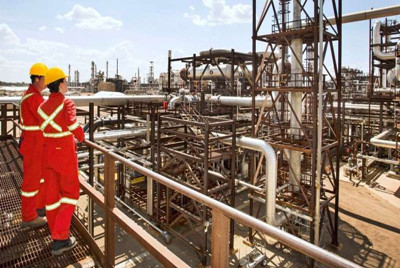
University of Alberta researchers have developed techniques that save a significant amount of time in developing more efficient carbon capture technologies, which may help lower the costs to use the technologies and increase their adoption as a way to mitigate carbon dioxide emissions.
U of A engineering professor Arvind Rajendran and his team developed a two-step screening process that assesses carbon capture materials called zeolites in seconds rather than a day.
Zeolites work by adsorbing—basically sticking to—carbon dioxide molecules, similar to the way odours can be captured by charcoal filters in our refrigerators. In carbon capture systems, the "flue-gas" exhaust emitted from a power plant can be passed through the zeolites, trapping the CO2 before it enters the atmosphere. Theoretically, millions of different types of materials can adsorb CO2, but to be efficient as part of an industrial process, a molecule must stick to CO2 and also release it on command when the carbon dioxide needs to be trapped or used.
However, not all zeolites are equal, Rajendran's team explains, some are much better than others at sticking to and releasing CO2.
The team, including master's graduate Vishal Subramanian Balashankar, assessed 120,000 zeolites and was able to whittle them down to only 7,000, which could then be screened down to two dozen good targets using traditional methods. One of these materials appears to be a significant improvement on the current standard material, zeolite-13x, resulting in 17 per cent more efficient power use.
The second tool—created together with U of A engineering professors Vinay Prasad and Zukui Li, and graduate students Kasturi Nagesh Pai and Gokul Subraveti—used known information about the carbon capturing molecules to predict behaviour and performance in a real-world system.
Using a machine learning algorithm eliminates the need to simulate the performance of each molecule, decreasing the computational load by a factor of 10 without losing accuracy, Rajendran noted.
Carbon capture technologies can prevent coal and natural gas power plants from emitting carbon dioxide but they currently cost so much to install and operate that power companies are hesitant to use them, he added.
"Our role is to provide these tools to help chemists find better molecules, and our expertise is designing processes that use the molecules to capture carbon," Rajendran explained.
Finding the perfect materials that fit into this goldilocks zone has always been a challenge, but the group's new machine learning tools are pointing researchers to viable new carbon capture materials, saving months lost to dead ends or work on inefficient materials. They're also helping engineers understand what carbon capture design would be most efficient.
If adsorbents are like charcoal fridge filters, machine learning is helping the researchers understand which brands are most effective at trapping odours, and how their integration in the fridge can change the effect.
The traditional process of making these decisions was slow, relying on laborious work and extensive computer simulations. Every possible molecule and every potential system design had to be individually simulated, requiring extraordinary computing power.
"The point is to quickly find molecules and systems that will reduce the cost of capturing carbon, to bring it down well below the carbon tax so it actually gets adopted," Rajendran said.
The techniques, recently published in ACS Sustainable Chemistry & Engineering and Industrial & Engineering Chemistry Research, can be adapted to speed up discoveries about other kinds of materials and processes related to climate change and industrial gas separations, including methane upgrading and oxygen purification—topics the research group is currently studying.
"We need renewable sources of energy, but we will have these hydrocarbon systems for years to come," he said. "This technology can stop emissions now, and buy us time to complete the transition."

